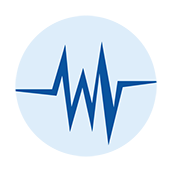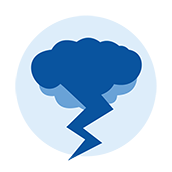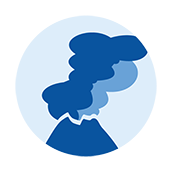What you can do to get ready for earthquakes
What you will find on here
What is an earthquake?

The information on this page is about being ready for an earthquake.
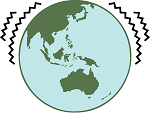
An earthquake is when the surface of the earth starts to shake.
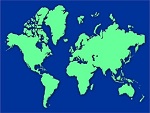
Earthquakes happen because the surface of the earth is made up of huge pieces called tectonic plates, which are moving all the time.
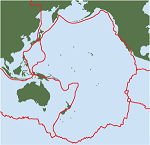
Earthquakes happen when the tectonic plates:
- bump into each other
- move past each other.
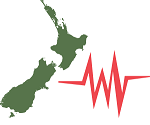
All of New Zealand is at risk of earthquakes.
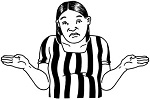
It is not possible to know when an earthquake might happen.
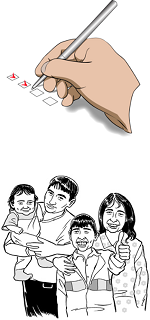
There are things we can do:
- to be ready for an earthquake
- to protect ourselves
- to protect our family/whānau.
Making an earthquake plan

The best way to get ready for an earthquake is to make a plan.
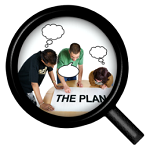
Having an earthquake plan will make it easier know what to do if it happens.
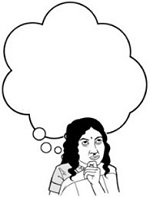
It is a good idea to think about what supplies you might need.

Supplies could be things like:
- water bottles for everyone in your house
- a cupboard with lots of canned food
- a first aid kit.

First aid is when you give medical help to someone who is injured so you can:
- save the life of that person
- prevent their injury from getting worse.
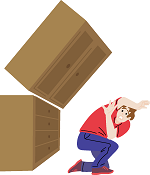
You could get badly hurt if a large object falls on you during an earthquake.
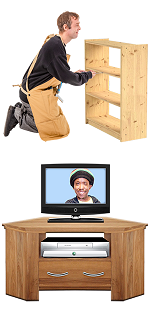
Large objects could be things like:
- bookcases
- televisions
- heavy ornaments like vases or photo frames.
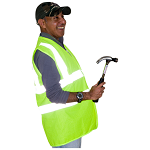
You can make your home safer by making sure any large objects that could fall over in an earthquake are fixed to a wall.

If you have insurance for your home you should make sure it is up to date.

Having insurance is when you pay money to an insurance company so that they will assist you if something goes wrong.
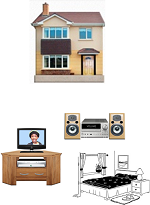
You should make sure you have insurance for:
- your home
- the things you have inside your home known as house contents.
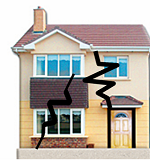
Having insurance for your home and contents will help you get things fixed quicker if your house is damaged by an earthquake.
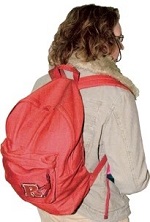
It is also a good idea to put together a grab bag which you can take with you in an emergency.
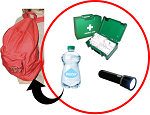
A grab bag is a small bag of essential items which you can take with you if you need to get away from danger very quickly.
Things you can do to be ready for an emergency
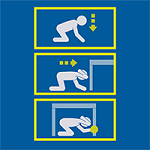
The best thing to do when an earthquake starts is drop, cover and hold.
Drop, cover and hold is what you do with your body to protect yourself in an earthquake.
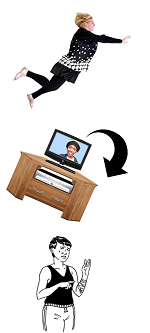
Drop, cover and hold:
- stops you from falling over when everything is shaking
- means you are less likely to get hit by any falling objects
- can protect you from getting badly hurt.

You can find out more about drop, cover and hold in these sections:
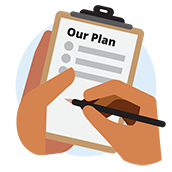
Your earthquake plan should include the safest places to drop, cover and hold.
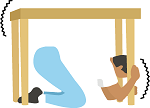
The safest place to drop, cover and hold is somewhere close so you do not have to go more than a few steps to get to it.
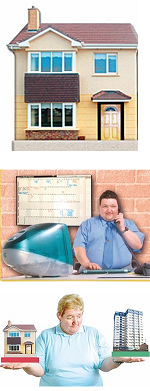
You should know where these safe places are:
- in your home
- where you go to work
- at other places you visit often.

If you are inside when an earthquake starts you should stay inside.
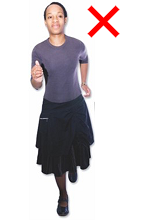
If you run outside when an earthquake starts you may get hurt by falling objects.
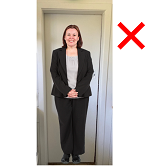
You should not stand in a doorway when an earthquake is happening.
In most New Zealand houses the doorways are no stronger than any other part of the house.
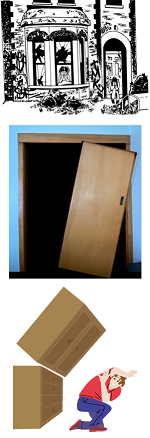
You should make sure that you drop, cover and hold well away from:
- windows that could break
- cupboards/doors that could swing open and hit you
- heavy objects that could fall on you.
Practising your earthquake plan

It is important to practise what you will do in an earthquake so you can act quickly to keep yourself safe if it happens.
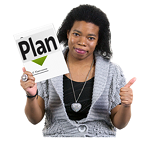
Practise is when you do something many times so that you get good at doing it.

You should practise doing drop cover and hold at least 2 times a year.

You could practise doing drop cover and hold when the clocks change at daylight savings time.

You could also practise doing drop cover and hold by taking part in New Zealand ShakeOut.
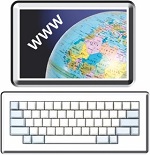
You can read more about New Zealand ShakeOut on this website:
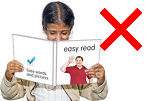
This information is not in Easy Read.
What is drop, cover and hold?

The following sections will tell you how to drop, cover and hold when an earthquake starts.

Drop

As soon as you feel an earthquake begin you should drop down on your hands and knees.
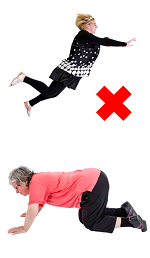
Doing this will stop you from falling / getting knocked over
but
it means you can still move if you need to.

Cover
You should cover yourself by getting underneath a strong table / desk if one is close to you.

You should make sure the table covers:
- your head
- your neck
- all of your body if you can.

If you cannot get under a table you should use your hands to cover:
- your head
- your neck.

Hold
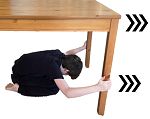
You should hold on to the legs of the table to stop it moving away from you.

You should keep holding the legs of the table until the shaking has stopped.

If you are not able to get underneath a table you should:
- use your hands to cover your head and neck
- hold that position until the shaking stops.
Drop cover and hold in other places

The rules for drop cover and hold can change depending on where you are when an earthquake starts.
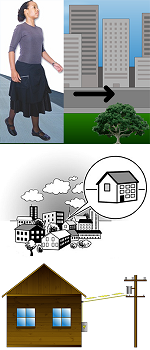
Drop cover and hold outside
If you are outside when an earthquake starts you should try to move away from any:
- buildings
- trees
- streetlights
- power lines.
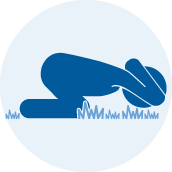
You should drop cover and hold in as safe a place as you can.
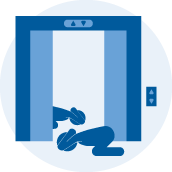
Drop cover and hold in a lift / elevator
If you are in a lift / elevator when an earthquake starts you should drop cover and hold in the elevator.
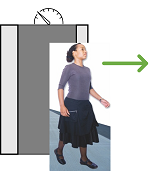
If you are able to you should try to get out of the lift / elevator at the nearest floor.
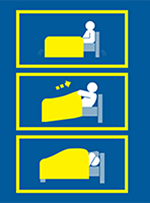
Drop cover and hold in bed
If you are in bed when an earthquake starts you should:
- stay in bed
- pull the sheets / blankets over your body
- use your pillow to cover your head.

You are less likely to get hurt if you stay in bed.
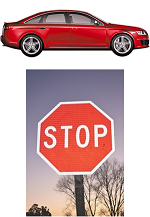
Drop cover and hold when you are driving
If you are driving when an earthquake starts you should:
- pull over to a safe place
- stop the vehicle
- wait inside your vehicle until the shaking stops.

Do not start driving again until the shaking has completely stopped.

Do not go near any structures that might have been damaged by the earthquake.
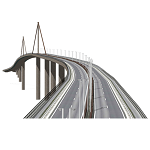
Structures are things like:
- bridges
- ramps.
Drop cover and hold for people with a mobility impairment
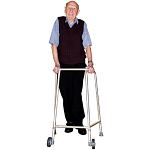
If you have a mobility impairment you might find it difficult to do the drop part of drop cover and hold.
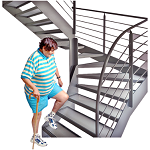
A mobility impairment means you might find it difficult to:
- get around easily
- keep your balance
- move your body in certain ways.
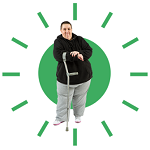
You may need to use a stick / cane to support yourself.

If you have a mobility impairment when an earthquake starts you should get as close to the floor as you can.
If you cannot get on the floor it is okay to sit on:
- a chair
- a bed.

You should use your hands to cover:
- your head
- your neck.

You should keep your stick / cane close to you so you can use it when the shaking stops.

You do not need to do the drop part of drop cover and hold if you use a mobility aid such as:
- a walker
- a wheelchair.
If you use these types of mobility aids you should lock, cover and hold.
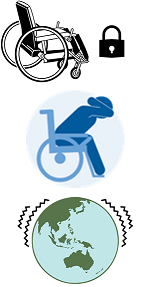
Lock cover and hold means you should:
- lock the wheels of your mobility aid so it cannot move
- bend over so you can cover your head / neck as much as you can
- hold this position until the shaking stops.
What to do if you feel an earthquake when you are near the beach

If an earthquake happens under the sea it can cause a giant wave called a tsunami.
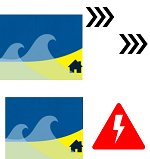
Tsunami are waves that can:
- travel very fast
- be very dangerous.
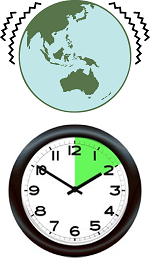
A tsunami is more likely to happen if the earthquake:
- is very strong
- lasts for a long time.
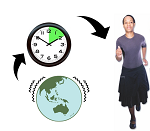
You should remember that if an earthquake is long or strong you should get gone.
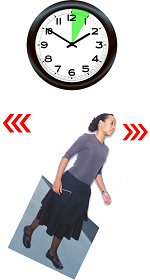
An earthquake is long or strong if the shaking:
- lasts longer than a minute
- makes it difficult for you to stay standing up.
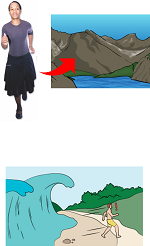
Get gone means that when the shaking has stopped you should move as quickly as you can to a high place
or
get as far away from the beach / sea as you can.

If you feel a long and strong earthquake when you are near the beach / sea you should:
- drop cover and hold until the shaking stops
- move away from the water as soon as it is safe to do so.
What to do after an earthquake

You should be ready for more shaking to happen even after an earthquake has stopped.

You should drop cover and hold every time you feel more shaking.

More shaking can happen at any time after an earthquake.

Sometimes more shaking happens many days after the first earthquake.

After an earthquake happens you should check yourself to make sure you have not been hurt.

If you have been hurt you should get first aid straight away.

You do not need to leave a building straight away after an earthquake.

You should stay inside after an earthquake happens even if you are frightened.
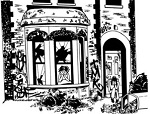
If you go outside you might get hurt by things the earthquake has damaged.
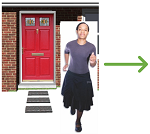
There are some reasons why you might need to get out of a building straight away after an earthquake.
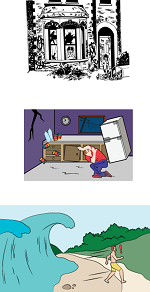
These reasons include:
- you can see it has been very badly damaged by the shaking
- staying inside would mean you are not safe
- you are at risk of a tsunami.

You may be told to turn off any utilities after an earthquake happens.
Utilities are things like:
- the water that comes out of your taps
- your electricity supply
- the gas supply that is connected to your house.
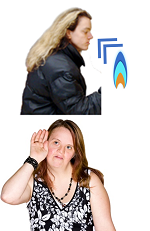
What to do if you smell gas after an earthquake
After an earthquake you should check if you can:
- smell gas
- hear a blowing / hissing noise.

If you notice any of these things you should:
- open a window straight away
- get everyone out of the house as soon as you can
- turn off the gas supply if you can.

What to do if you see any damage to electrical items after an earthquake
After an earthquake you should look out for:
- electrical sparks
- broken wires
- damage to electrical systems.

If you notice any of these things you should turn off the electricity at the main fuse box if it is safe to do so.
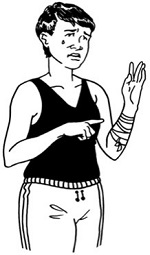
Protecting yourself from broken objects
After an earthquake you are at risk of getting hurt by broken objects.
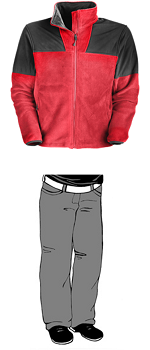
You can protect yourself from getting hurt by broken objects by putting on clothing that covers your:
- arms
- legs.

You should also make sure you protect your feet by putting on some strong footwear.
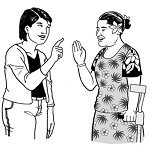
If you are in a public place when an earthquake happens
If you are in a public place when an earthquake starts you should do what the person in charge tells you to do.

A public place could be:
- a shop / store
- a library
- another building
- public transport such as a:
- bus
- train.

Contacting people after an earthquake
You should not use the telephone after an earthquake unless it is to make an emergency call to 111.
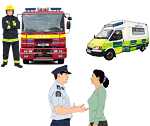
This is so that the phone lines can be kept clear for calls to emergency services.
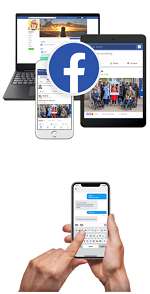
You should use other ways of contacting people if you need to such as:
- social media
- text messages.
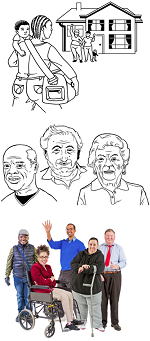
You should check in with other people who may need support after an earthquake such as:
- your neighbours
- older / disabled whānau
- anyone else who might need your support.
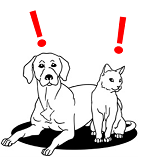
Pets and earthquakes
Your pets may be frightened by an earthquake.

You should make sure you protect your pets from any dangers.
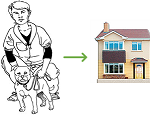
You should keep your pets inside unless it is not safe to do so.
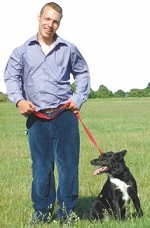
You should also keep control of your pets so they cannot hurt other people.
What to do if your property is damaged after an earthquake

It is possible that an earthquake could damage your property.

Your property could be things like:
- the outside of your house
- things inside your house
- your car
- things in your garden such as a shed.
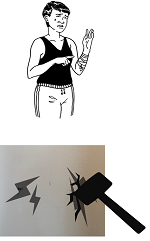
If your property is damaged by an earthquake you should not do anything that:
- could be dangerous to you
- could cause more damage to your property.

If you have insurance you should tell the insurance company about the earthquake damage as soon as possible.
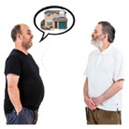
If you rent your home you should tell your landlord about the earthquake damage as soon as possible.
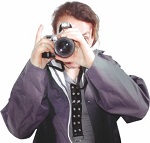
You should take photos of any earthquake damage.

Having photos means that the insurance company can look at your insurance claim much faster.
What to do in an emergency
There are a lot of hazards in New Zealand. A hazard is something that can cause danger or put people at risk.
